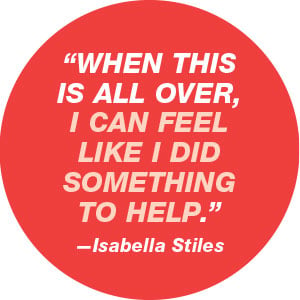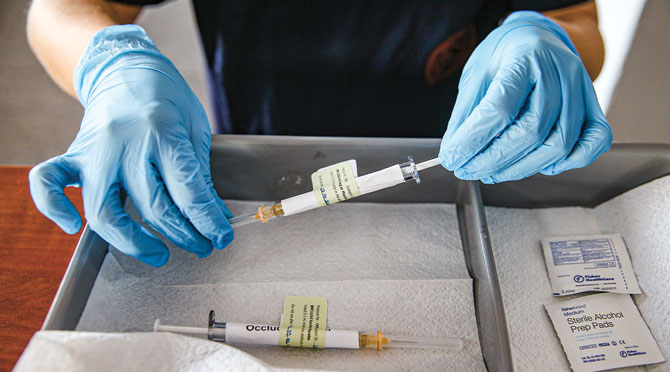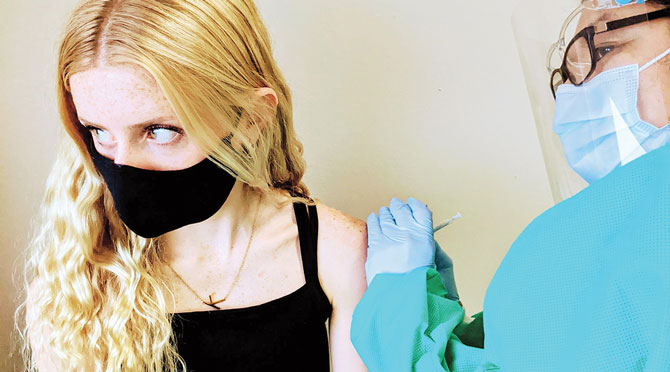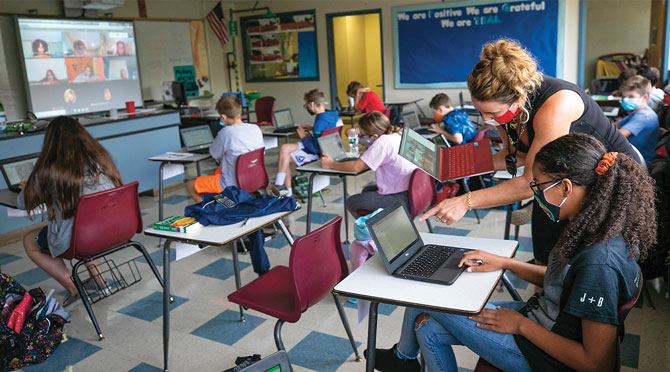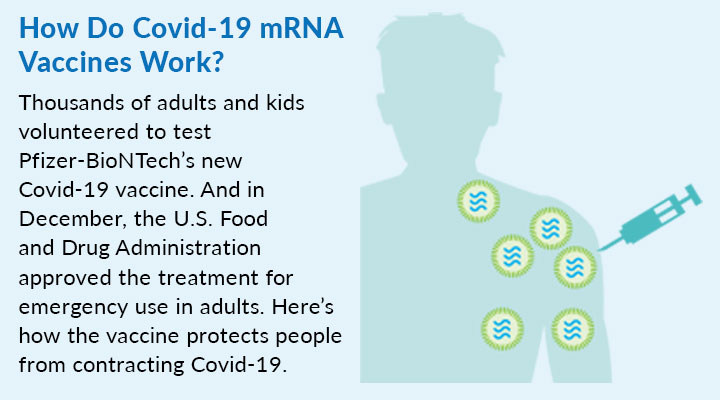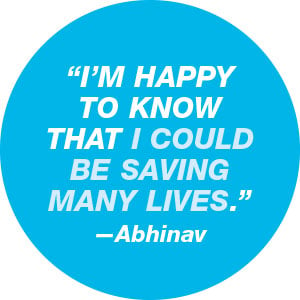
The Covid-19 pandemic has affected the lives of nearly everyone in the world. But for 15-year-old Isabella Stiles, who lives in Bardstown, Kentucky, it hit particularly close to home. Her father, Matthew, is a doctor who practices family medicine. He was repeatedly exposed to the virus that causes Covid-19 while treating sick patients. Each time that happened, Isabella’s dad had to quarantine for two weeks, separated from his family to make sure he didn’t pass the virus on to them.
As of February 3, 2021, more than 26.5 million people in the U.S. had become infected with the virus that causes Covid-19 and more than 447,000 had died. When Isabella learned that teens and preteens could help test an experimental vaccine that might protect people from developing Covid-19, she considered joining the study. After much discussion, Isabella and her family decided that she could participate. “When this is all over, I can feel like I did something to help end the pandemic,” says Isabella.
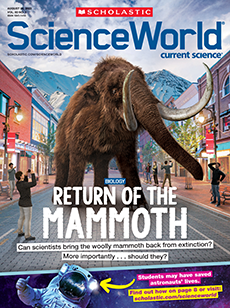
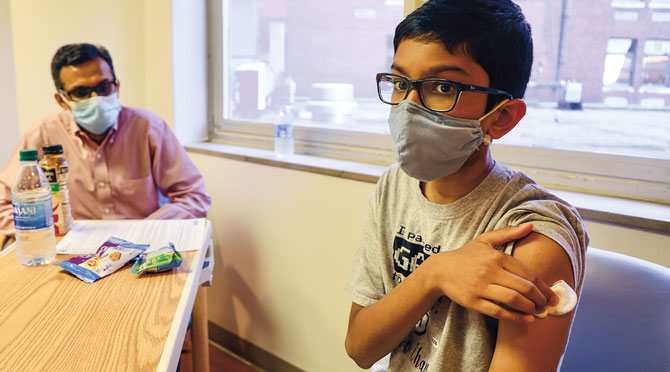
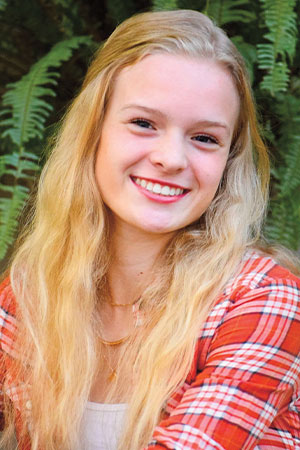
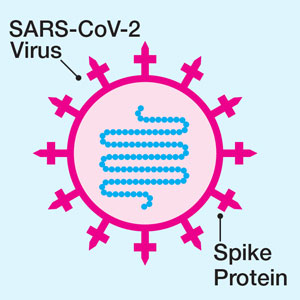
 Each particle of the SARS-CoV-2 virus, which causes Covid-19, is covered with distinctive proteins— large biological molecules— that look like spikes.
Each particle of the SARS-CoV-2 virus, which causes Covid-19, is covered with distinctive proteins— large biological molecules— that look like spikes.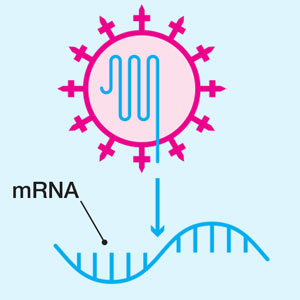
 Scientists studied the virus’s genetic code— the set of instructions that allow the virus to function and reproduce. Researchers used a section of code to design and produce molecules of messenger RNA, or mRNA, that carry the instructions for making the spike proteins.
Scientists studied the virus’s genetic code— the set of instructions that allow the virus to function and reproduce. Researchers used a section of code to design and produce molecules of messenger RNA, or mRNA, that carry the instructions for making the spike proteins.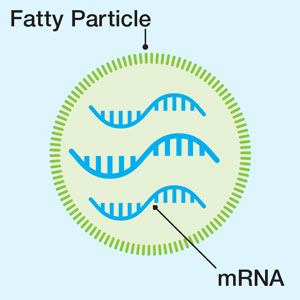
 Scientists packaged the mRNA inside tiny particles made up of fats.
Scientists packaged the mRNA inside tiny particles made up of fats.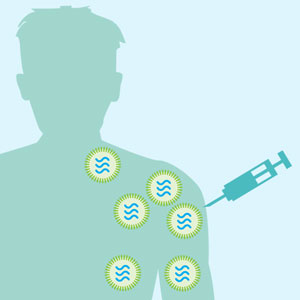
 When a person receives the vaccine, these particles are injected into their muscle tissue.
When a person receives the vaccine, these particles are injected into their muscle tissue.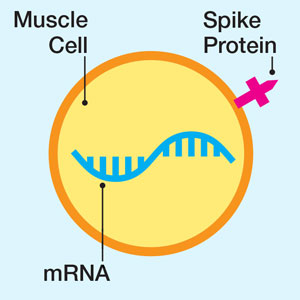
 The particles containing mRNA enter the body’s muscle cells. The cells use the mRNA as a template to build spike proteins and display them on their surfaces. The mRNA from the vaccine breaks down once it’s used by the cell—it does not alter the cell’s DNA, or genetic code.
The particles containing mRNA enter the body’s muscle cells. The cells use the mRNA as a template to build spike proteins and display them on their surfaces. The mRNA from the vaccine breaks down once it’s used by the cell—it does not alter the cell’s DNA, or genetic code.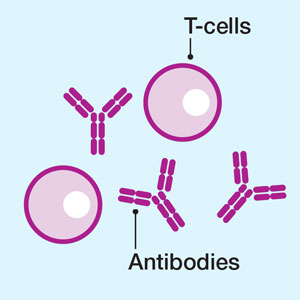
 The unfamiliar spike shape triggers the body’s disease-fighting immune system to respond by producing molecules called antibodies and special immune cells called T-cells. Two doses of the vaccine are required to produce a strong immune response.
The unfamiliar spike shape triggers the body’s disease-fighting immune system to respond by producing molecules called antibodies and special immune cells called T-cells. Two doses of the vaccine are required to produce a strong immune response.
 If a vaccinated person is exposed to the SARS-CoV-2 virus, their body is primed to recognize the spike proteins. Their immune system will know how to detect and neutralize the virus. Scientists do not know if the vaccine stops people from spreading the virus—that’s why they recommend that people practice safety measures even after getting vaccinated.
If a vaccinated person is exposed to the SARS-CoV-2 virus, their body is primed to recognize the spike proteins. Their immune system will know how to detect and neutralize the virus. Scientists do not know if the vaccine stops people from spreading the virus—that’s why they recommend that people practice safety measures even after getting vaccinated.